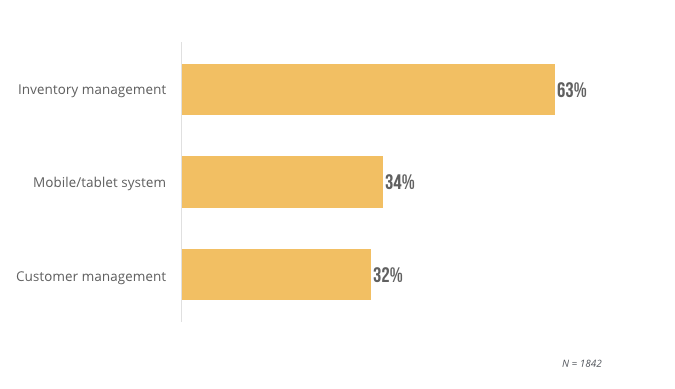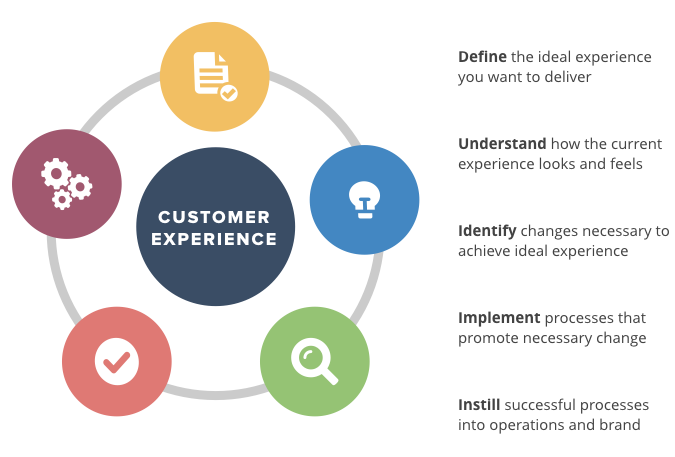How to Improve Restaurant Service Quality With New Technologies
Most restaurant owners, operators, managers and associates don’t realize the negative impact that even one unremarkable customer experience has on their brand and business growth.
To avoid these negative experiences and ensure service quality is constantly improving, restaurants must adopt new technologies.
The Restaurant Technology in 2017 report by Toast POS highlights the impact restaurant technology has on customer experiences and operational efficiencies:
Ninety-five percent of restaurant operators say technology improves their efficiency
Seventy-three percent of restaurant patrons say technology improves their experience
Restaurants not using these technologies for continuous improvement are at risk of creating poor experiences.
That’s why in this article we explain how to improve service quality using new technologies and offer a tangible roadmap for boosting customer experiences.
Here’s what we’ll cover:
Critical Technologies for Improving Restaurant Service Quality
Restaurants Must Define a Strategy for Customer Experience Improvement
40 Percent of Diners Say Food Isn’t the Most Important Factor
Critical Technologies for Improving Restaurant Service Quality
Let’s begin with the technology you can use to boost your service quality—and your overall customer experiences (spoiler alert**:** It’s not a pasta maker).
As far as technology usage goes for small and midsize restaurants, adopting restaurant management and point of sale software is the greatest advantage operators give themselves.
Our many daily conversations with restaurant owners highlight their top requested restaurant software needs. Every restaurant owner we’ve advised is looking for point of sale (POS) capabilities to open tabs and process and complete transactions. After POS, top features include:
Top Requested Restaurant Software Features

Let’s look into each of these in greater detail:
Inventory management tools help restaurants track perishable and non-perishable products to ensure necessary stock levels are on hand. Restaurants can use inventory management to monitor produce, meats, dairy and other regularly ordered products.
Mobile/tablet POS systems let servers carry their POS software throughout the restaurant. This improves customer experiences by reducing server errors and expediting the payment process. It also provides an opportunity for operators to prompt servers to upsell, driving additional revenue for the business and increased tips for staff.
Customer management tools primarily support restaurant loyalty and rewards programs. These tools record valuable customer information and track their purchases at a restaurant. Rewards are typically provided once customers reach specific frequency or purchase thresholds.
The Toast POS report mentioned above echoes our findings and highlights additional auxiliary technologies that positively impact customer experiences.
RECOMMENDED ACTIONS:
Three technologies that you must offer include:
Online reservations
In-house Wi-Fi
According to diners themselves, these are the technologies that most greatly impact the customer experience. Implementing restaurant software and auxiliary technologies must be a priority for your restaurant.
Restaurants Must Define a Strategy for Customer Experience Improvement
If you’re feeling overwhelmed, that’s OK. It’d be weird if you weren’t. It’s always nerve-racking to invest in new technologies. But don’t worry—people do it every day!
Where many people fail is by thinking a software investment is “the answer” to improving diner experiences and service quality. It’s better to think of software as facilitating customer experience and operational improvements.
To achieve these improvements, you have to put an actual strategy in place. Here’s a high-level roadmap you can use to achieve your ideal customer experience.
Continuous Customer Experience Improvement Process

Let’s dig into each step of the dining experience optimization process:
Define: This is the hypothesis step. Blend together customer research and prior knowledge with your restaurant concept, menu design, marketing strategy, current technology, staff capabilities and any other critical factors. The result should be an achievable, profitable experience that satisfies customer expectations
You’ve decided you want your restaurant to stand out in your market with quality food that’s moderately priced and served quickly all day.
Understand: This is the first step in implementing your newly designed experience. Start by understanding what the current experience is. Ideally, you’ll already have a finger on the pulse of your current experience. The point here is to see just how far off you are from the experience you’ve designed.
Perhaps you’ve been operating as a traditional dining operation but after doing this you realize your food and desired experience is best suited for a quick-service, counter-order model.
Identify: This is where you plan how to best implement your new experience. Do you need new technology? Do servers need to be trained? Do you need more kitchen staff? These are the questions you need to ask. You might find that your current experience isn’t too far off from the optimal one you’ve defined.
What do you need to do operationally, structurally, menu-wise to turn your operation into a quick-service restaurant (QSR)? This could be menu adjustments, remodeling your space and changing staff.
Implement: This is where you actually change things up. Start taking online orders. Roll out your mobile POS systems. Redecorate. Start accepting other payment options. Whatever changes you need to make to deliver the defined experience, make them here.
Your counter space has been built and you got an organized way for customers to queue. You’ve adjusted your menu to offer five base items with tons of options to customize with add-ons or additional sides.
Instill: This is where you see what sticks from the implementation phase. This all started with a hypothesis, so you’re going to get some things wrong. That’s fine; just take them back to the drawing board.
But, changes that are well-received and inline with the defined experience should be instilled into the operation. These are improvements, and you should be proud of them.
Over time, you see that 80 percent of customers order one of three base items. So you adjust your menu to only those three mains to save on food costs.
The key takeaway from the roadmap is that “customer experience” is not some stagnant thing. It’s constantly changing and evolving with customer expectations, new technologies and the restaurant market at large.
As such, you should be regularly analyzing and discussing your experience with employees and top customers. Don’t be afraid to react to new technologies and customer expectations. But the goal you should strive for is to stay a step ahead, proactively evolving and actually setting expectations.
40 Percent of Diners Say Food Isn’t the Most Important Factor for Experience
Restaurants that offer consistently positive experiences gain greater customer retention and create the ever-valuable customer advocate, who freely recommends your restaurant to other potential customers. But getting your customer experience right is no easy feat, especially as customer expectations are constantly evolving.
We’ve talked about a formal experience improvement strategy above, but there’s something we need to clarify:
BETTER FOOD IS NOT THE ANSWER.
As a restaurant owner/operator, you necessarily have to take pride in the quality of your food. And with so many new restaurants and delivery options opening across the country, it’s easier than ever for consumers to find delicious food. Which means you need to offer food that will bring customers back in the door.
Having said that, better food is rarely ever the answer to restaurant service quality and experience improvements.
The same Toast POS survey mentioned above found that over 40 percent of diners think the quality of food isn’t the most important factor for a positive restaurant experience.
This means that the product you’re selling isn’t just food. As a restaurant, you’re in the business of selling an experience.
Being in the “experience business” means you must be doing everything possible to deliver well-rounded, consistently positive experiences (not just good food.)
That’s why you can’t delay adopting restaurant software and additional technologies. And that’s why you must get a formal plan in place for continuous customer experience improvement, which we’ll cover next.
What’s the Best Next Action to Take Today?
Here’s the deal:
New technologies will improve your restaurant service quality. They’ll help improve experiences and increase your operational efficiency. Invest in them.
Improving customer experiences at your restaurant(s) isn’t something that just “happens”—you need a repeatable, measurable approach.
Your food obviously needs to be great and offer a profitable margin, but food alone won’t save your business in the long run.
There are tons of restaurant software platforms for you to choose from, often leaving operators overwhelmed with the selection process. Choices include full on restaurant point of sale software, as well as more specific, niche options such as food delivery software, customer loyalty software and mobile POS (mPOS) systems.
The good news for you is that you don’t have to go through the selection process alone. Our team of expert restaurant software advisors has helped business owners just like you put together a short list of top restaurant systems that meet their needs.
In addition, we’ve got a trove of user reviews from your restaurant operating peers providing feedback and critiquing specific restaurant software offerings.
No matter what path you take, just do something. There’s a restaurant out there acquiring new customers and turning them into loyal regulars. Those customers should be yours.